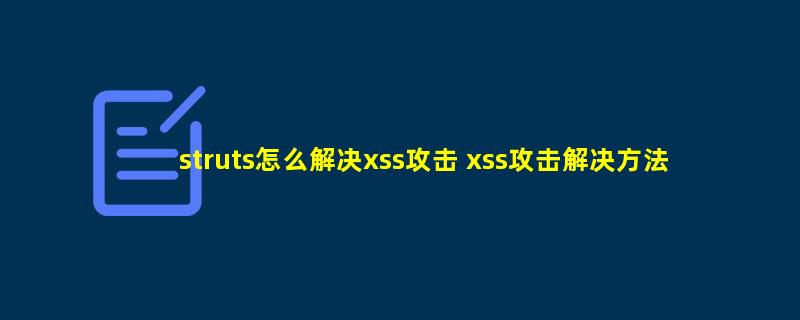文章摘要:struts怎么解决xss攻击 xss攻击解决方法
struts解决xss攻击的方法: 1.采用struts2的拦截器过滤,将提交上来的参数转码来解决,例如配置s […]

struts解决xss攻击的方法:
1.采用struts2的拦截器过滤,将提交上来的参数转码来解决,例如配置struts.xml,代码如下:
<package name="default" namespace="/"
extends="struts-default, json-default">
<!-- 配置拦截器 -->
<interceptors>
<!-- 定义xss拦截器 -->
<interceptor name="xssInterceptor" class="...此处填写拦截器类名"></interceptor>
<!-- 定义一个包含xss拦截的拦截栈 -->
<interceptor-stack name="myDefault">
<interceptor-ref name="xssInterceptor"></interceptor-ref>
<interceptor-ref name="defaultStack"></interceptor-ref>
</interceptor-stack>
</interceptors>
<!-- 这个必须配置,否则拦截器不生效 -->
<default-interceptor-ref name="myDefault"></default-interceptor-ref>
<action>
...此处省略n个action
</action>
</package>
2.使用Java代码,拦截器实现类,例如:
import java.util.Map;
import org.apache.commons.lang3.StringEscapeUtils;
import com.opensymphony.xwork2.ActionContext;
import com.opensymphony.xwork2.ActionInvocation;
import com.opensymphony.xwork2.interceptor.AbstractInterceptor;
public class XssInterceptor extends AbstractInterceptor{
@Override
public String intercept(ActionInvocation invocation) throws Exception {
// TODO Auto-generated method stub
ActionContext actionContext = invocation.getInvocationContext();
Map<String, Object> map = actionContext.getParameters();
for (Map.Entry<String, Object> entry : map.entrySet()) {
String value = ((String[])(entry.getValue()))[0];
entry.setValue(StringEscapeUtils.escapeHtml4(value));//将提交上来的字符串进行转码
//System.out.println((entry.getValue()));
}
return invocation.invoke();
}
}



